SeaCoast Roofing & Exteriors
Flat Roof and Mansard Roofs
Enjoy the fresh air and warm sun by your pool or patio without the bugs and the sunburns by installing a screen cage built by SeaCoast!
We specialize in re-screening & repairing pool, patio, and porch screen enclosures for residential AND commercial applications!
Flat Roofs
Although flat roofs are a very popular choice on commercial buildings, many modern homes also employ flat roof style of roofing. Also, many traditional roofs have small sections of flat roofing on awnings or carports.
Unlike traditional sloped roofs, flat roofs can also provide practical and/or versatile spaces, which can be utilized for various purposes; everything from lowering hear absorption through reflective coatings to outdoor living areas, green roofing, garden rooftops, and solar panels, etc.
Flat roofs can be built out of a variety of different types of materials. The most common material types are: Modified Bitumen (Mod-Bit), Concrete, Built-up Roof (BUR), TPO, EPDM, PVC, and Green roofing.
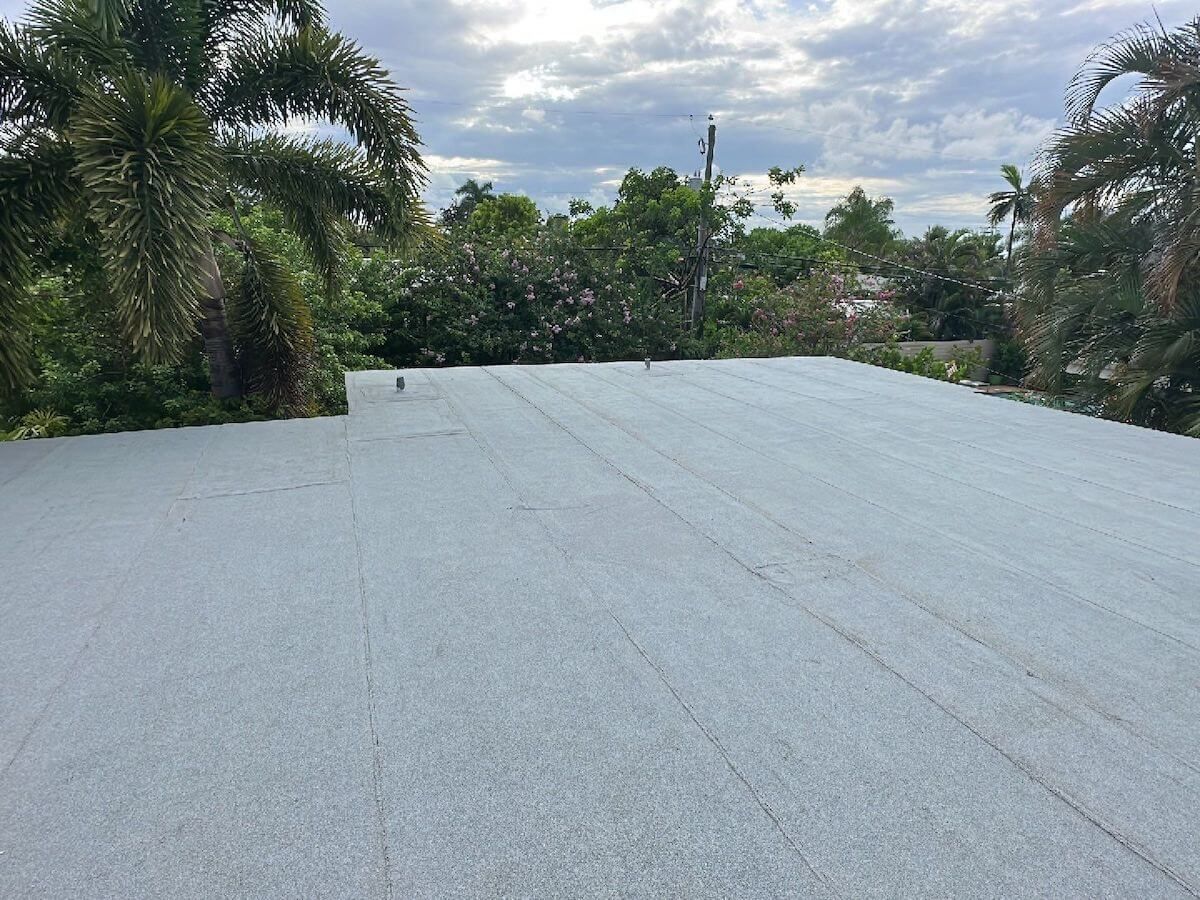
Modified-Bitumen (Mod-Bit)
Modified bitumen (aka "Mod-Bit") roofing is a type of asphalt materials, which has been modified with rubber or plastic additives in order to improve durability and flexibility. Mod-Bit comes in rolls, which are applied to the roof with heat and/or adhesives, and is commonly called "torch-down" when applied with heat or fire-emitting torches. Modified bitumen roofing is relatively easy to install, repair, and maintain, and can last up to 10-20 years. The main drawback of Mod-Bit is that it requires regular and ongoing inspections to assure it is sealed to prevent leaks.
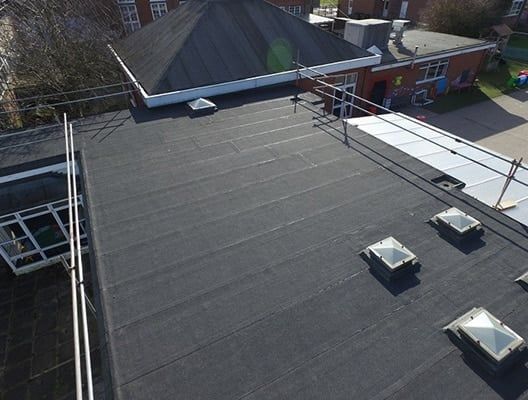
Built-Up Roofing (BUR)
Built-up roofing
(BUR), is a type of traditional flat roofing material, which consists of multiple layers of asphalt, felt and/or fiberglass mats, which are applied in an alternating fashion, then topped with a layer of gravel or a reflective coating. BUR is an affordable and durable option that can last as long as 30 years (with proper maintenance). The drawback to BUR is that it absolutely requires professional installation AND typically emits harmful fumes during installation.
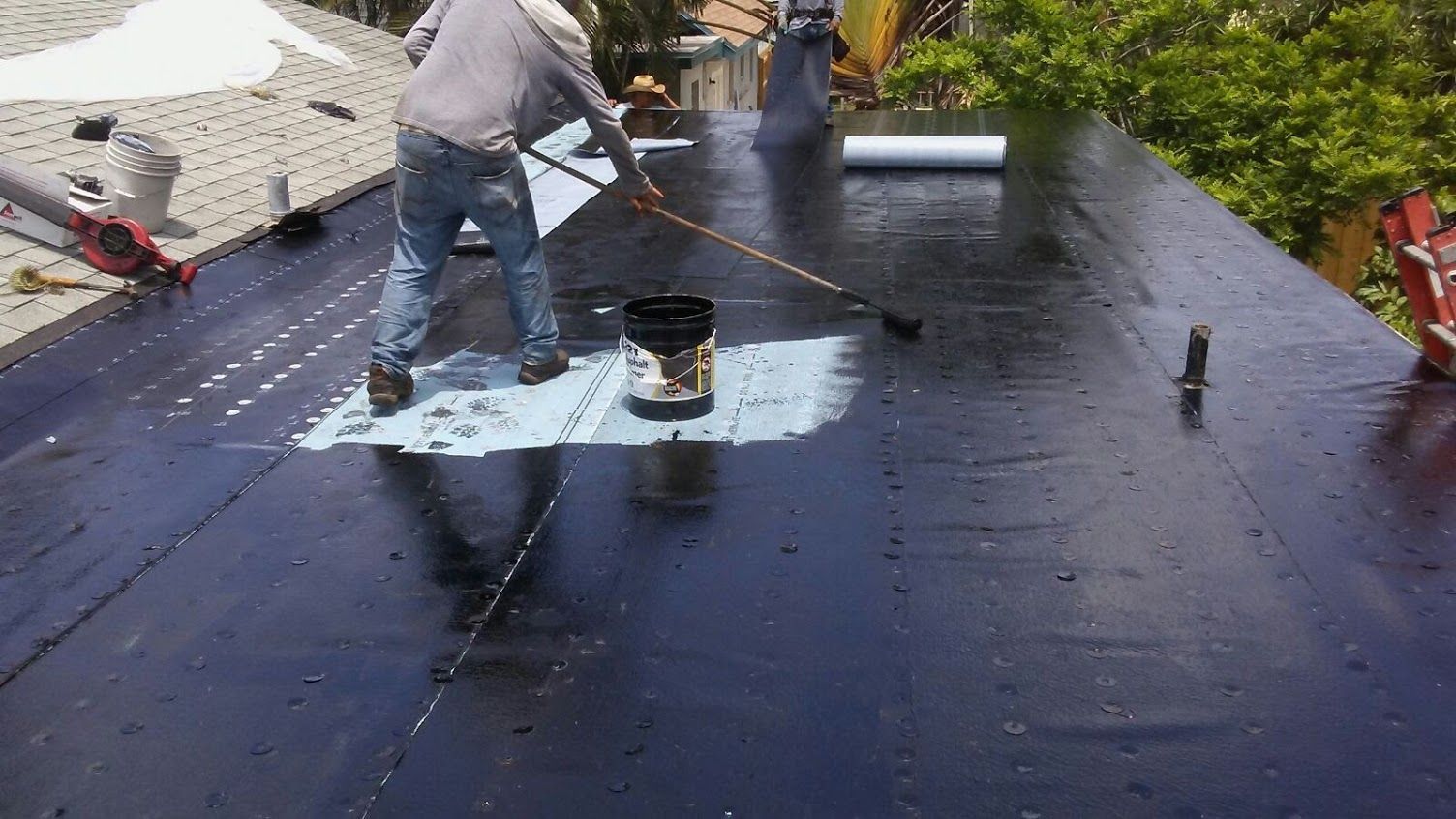
Concrete Roofing
Concrete roofs are built by pouring concrete cement into molds on the rooftop to create a smooth surface. Since there no seams, there are no failure points on the flat top of the roof for water to leak through into the interior of the building. Concrete roofing is very durable and may last as long as 50 years, and can withstand high winds, intense hail, rot, and even fire. The drawback with concrete roofing is that water can absorb into the concrete as soon as it is installed, so once it is time to reroof or coat the roof, moisture may get trapped within the concrete and potentially cause problems to the new roof surface. This is why it is vitally important to coat the concrete roof only when it is thoroughly and absolutely dry.

TPO Roofing
Thermoplastic Olefin roofing (TPO) is a single-ply roofing membrane made of a blend of rubber and plastic. It is lightweight, very durable, and resistant to chemicals, UV rays, and punctures. TPO roofing is easy to install (with proper tools) and maintain, it can last as long as 30 years. The drawback to TPO is that it may be susceptible to potential tears as a result of excessive foot traffic or debris during a storm. Also, a common reason for punctures to TPO in all types of single ply roofing is debris or hardware (nails or screws) left on the roof that create small holes in the material when stepped on, which may allow water to intrude.
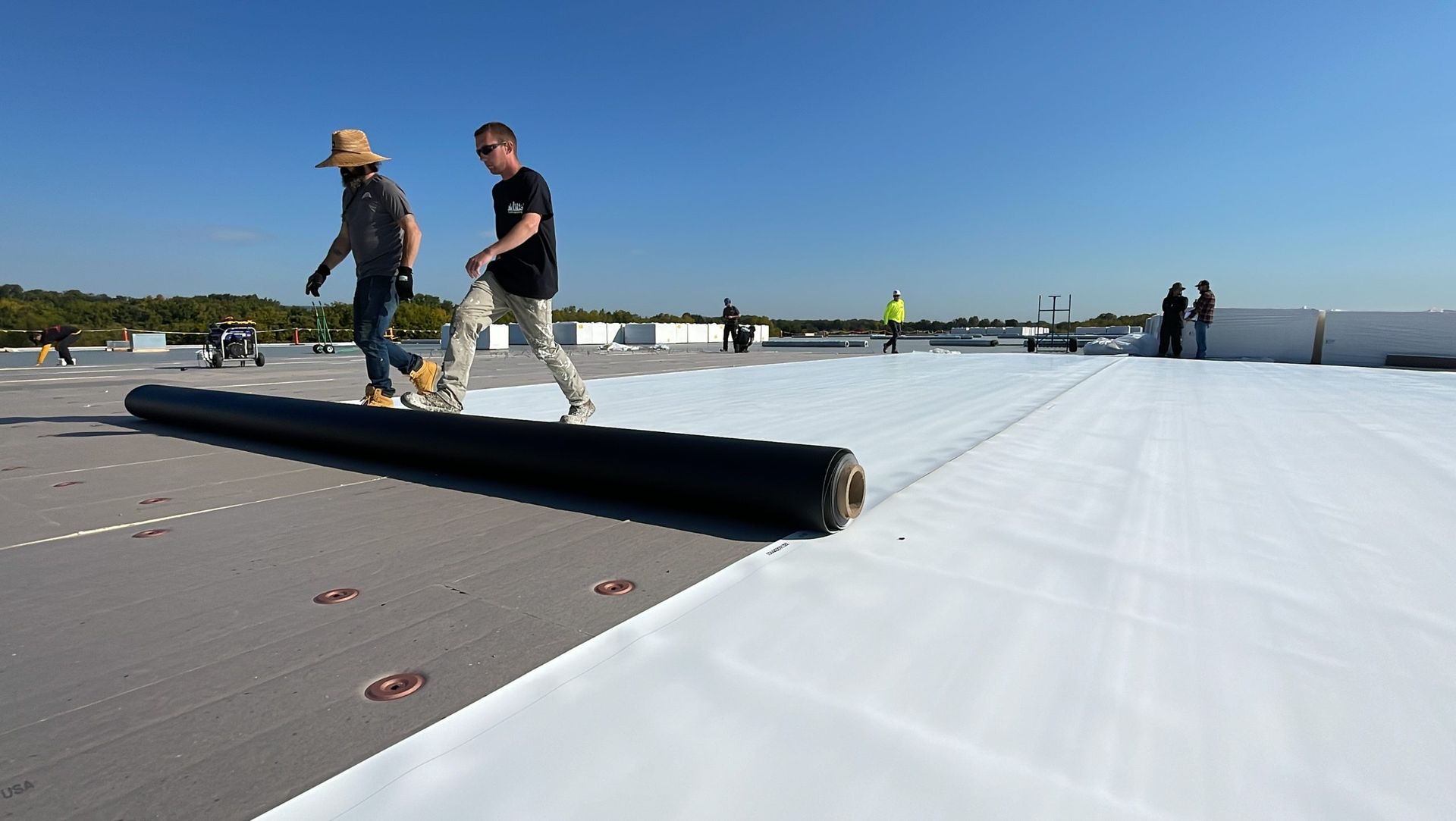
EPDM Roofing
Ethylene Propylene Diene Monomer (EPDM) roofing is a type of single-ply roofing membrane, made of a synthetic rubber material. It is very durable, weather-resistant, and can also withstand extreme temperatures. EPDM roofing is easy to install, as well as easy to maintain, and can last up to 50 years. On the downside, EPDM roofing may be susceptible to shrinkage and/or tenting due to the elasticity of rubber, which can potentially cause damage or leaks.
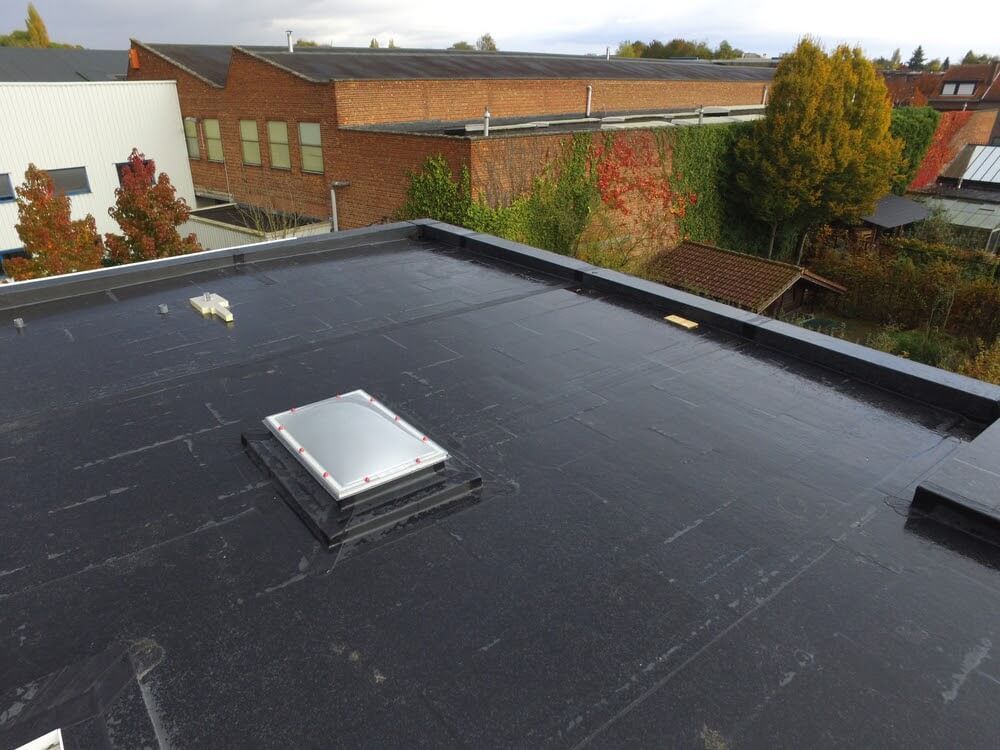
PVC Roofing
Polyvinyl Chloride (PVC) Roofing is a type of single-ply roofing membrane, which is composed of a synthetic plastic material. It is durable, fire-resistant, as well as resistant to chemicals and UV rays. PVC roofing is easy to install (with proper tools) and maintain, and can as long as 30 years. However, it may be susceptible to punctures and requires regular inspections to prevent leaks.

Metal Roofing
Metal roofing, while this type of roofing is not exactly "flat", it would be considered "low slope", as it typically has a slope of 2:12 (almost flat). It is composed of a system of metal panels seamed together to provide a continuous metal surface. Metal roofing is known for longevity, durability, and energy efficiency. Metal roofing can be composed of a number of different metals, most common ones being steel (galvanized, galvalume, or factory-coated), aluminum, copper, or zinc. Metal roofing can last up to 50 years and require little maintenance, but should be inspected regularly for rust as it can build up in areas where the coating has been compromised.
The drawback to metal roofing is a "ting-ting" sound during rain (if not much insulation below). It also does not stand up well to hail or impacts during storms, which can result in dings and dents. Metal roofing is also quite expensive to repair since metal is typically an expensive material and the panels are large.

Green Roofing
Green roofing
is a type of flat roofing material, which incorporates plants, soil, and/or drainage layers that are installed over a single-ply roof (TPO, PVC, or EPDM), BUR, or Mod Bit roof in order to create a living type surface. Green roofing offers various benefits, such as reduced storm water runoff, improving air quality, providing insulation, as well as providing pleasant, natural ambiance. The challenge with Green Roofing is that it requires specialized installation and consistent and ongoing maintenance. Green Roofing may also be not be suitable for all climates or buildings.
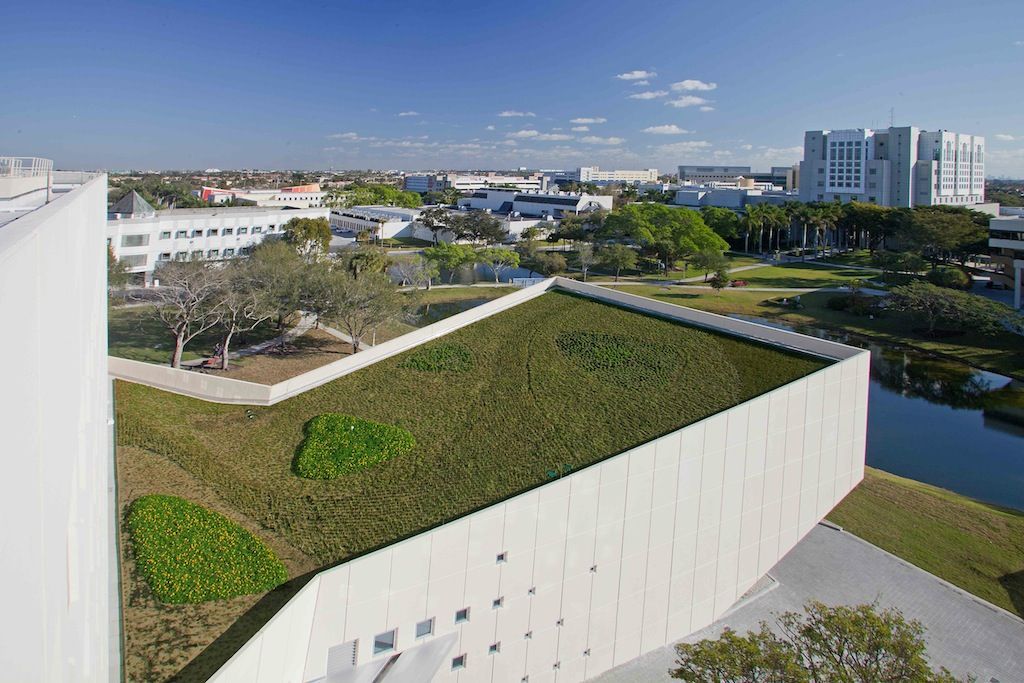
Ballasted Roofing
Ballasted roofing is a method of providing UV and/or fire protection to BUR roofing, as well as securement of EPDM, TPO, PVC single ply roofs. This securement eliminates (or reduces) the need for adhesives and fasteners in the field area of the roof. The ballasts are essentially heavy rocks arranged on top of the roof membrane in order to hold it in place. It is also important to note that while this type of securement is a surprisingly effective method of holding the membrane in place, it is not allowed in Florida since strong storms and/or hurricanes may present enough wind force to propel the rocks flying to cause damage to surrounding structures.
Why Choose Us
- We are experienced in repairing or replacing all types of roofing materials
- Shingles
- Clay or Concrete tile
- Stone coated steal tile
- Metal roof
- Flat roof
- We are well equipped and have all of the necessary tools.
- We only use top quality materials.
- We are properly licensed and insured.
- We guarantee our work tp pass inspection.
- Financing Available!
Let's Install Your Screen Cage!
You can rest assured that SeaCoast has well over 180 years of combined roofing experience, serving Southwest Florida.
We offer high-quality, professional roofing and exteriors services, and stand by our work with a world class workmanship guarantee.
FOLLOW US ON :
Contact Details
Address: We are headquartered in Fort Myers, FL and have an office/yard in Lehigh Acres!
Phone No:
Email:
Site Links
| Copyright SeaCoast Roofing & Exteriors